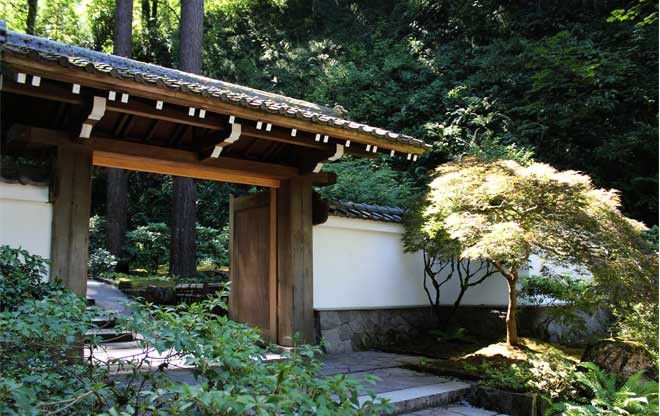
Antique Gate
The Antique Gate prepares visitors for the integrated relationship between highly crafted structures and carefully selected plants.
Image: Jeff Schnabel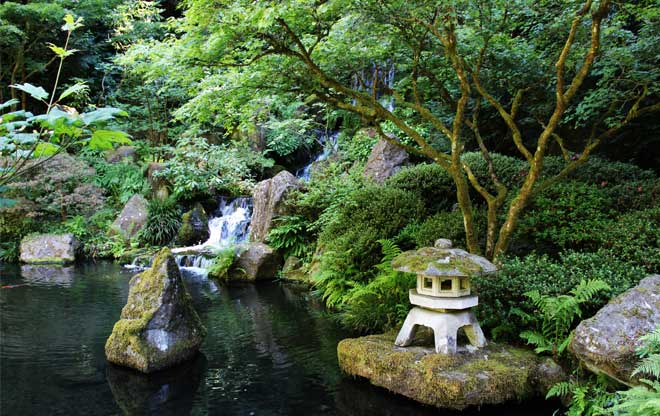
Stone Lanterns
Stone lanterns are located throughout the garden. This one provides a counterpoint to Heavenly Falls nearby.
Image: Jeff Schnabel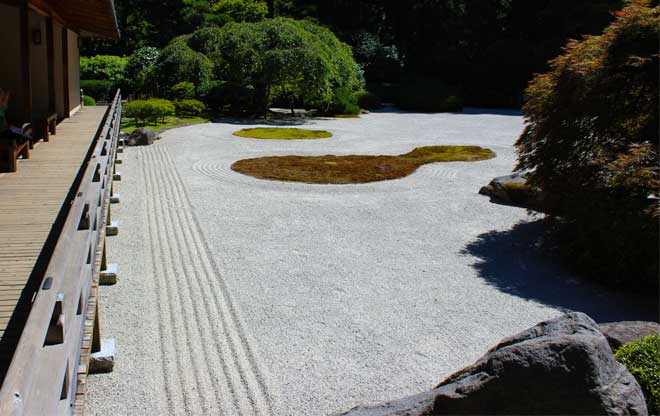
A Sand Sea
The Flat Garden uses raked sand to suggest the sea. Within the sand are two islands shaped like a sake cup and bottle to suggest pleasure and a desire for the visitor’s happiness.
Image: Jeff Schnabel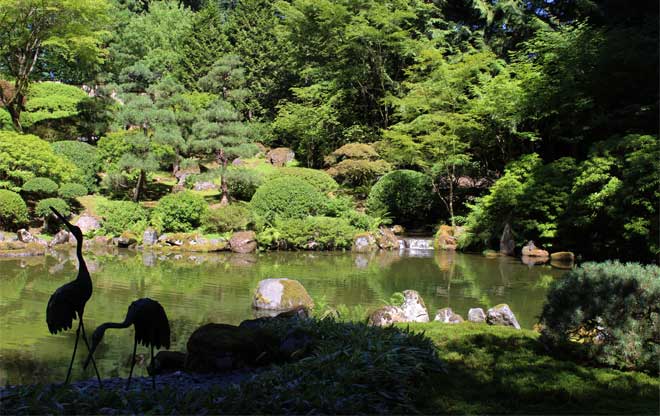
Tortoise and Crane
The Strolling Pond is crossed by a moon bridge and contains crane and tortoise stones that are symbols of longevity.
Image: Jeff Schnabel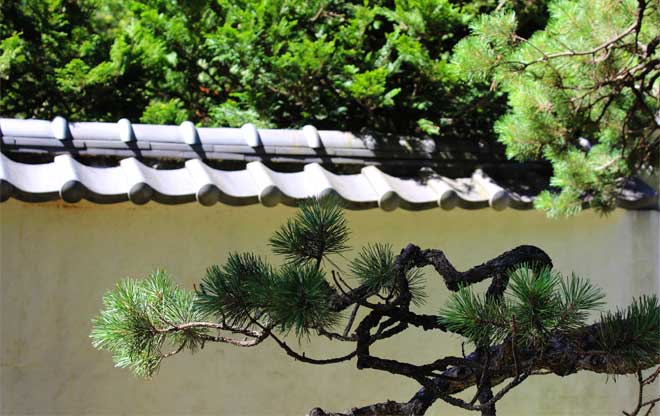
Picturesque Pine
The stucco and tile structures provide an ordered background to the highly cultivated picturesque plants.
Image: Jeff Schnabel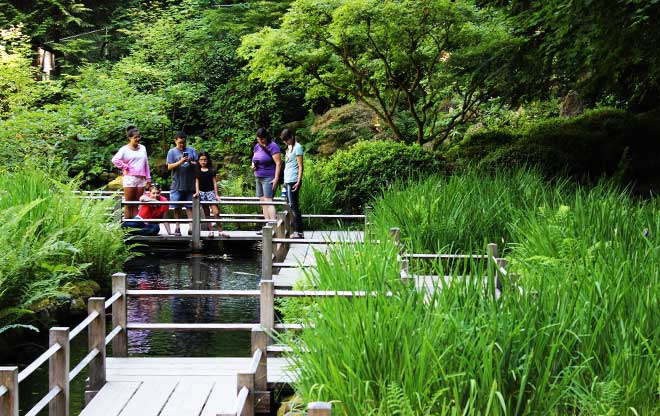
Zig Zag Bridge
The Zig Zag Bridge allows visitors to meander just over the water and through an extensive field of iris.
Image: Jeff Schnabel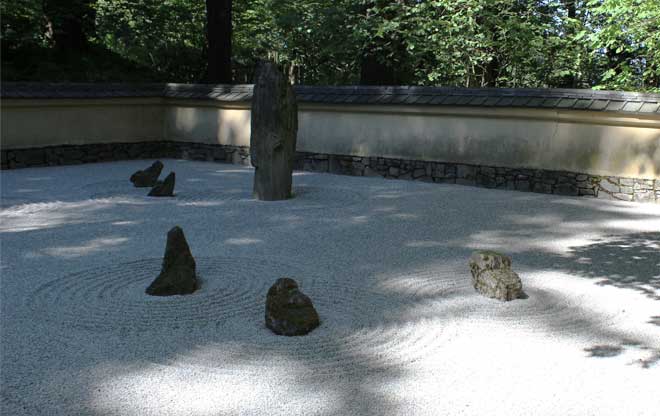
Zen Garden
The Sand and Stone Garden is a walled landscape of weathered stones rising out of raked gravel that appears like water ripples or waves. This contemplative garden type is typically found in Zen monasteries.
Image: Jeff Schnabel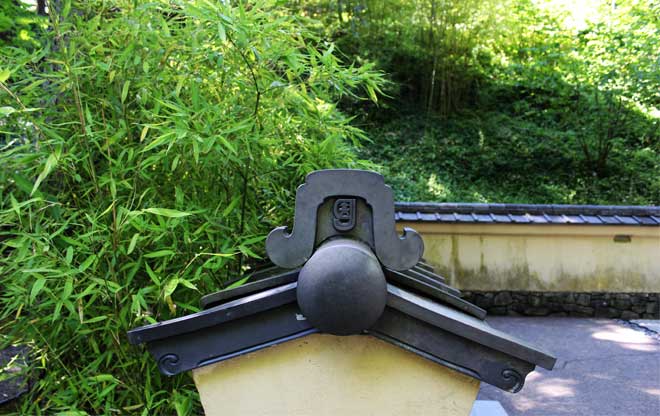
A Place for Sentimental Pleasure
The primary natural elements of the garden are stone, the “bones” of the landscape; water, the life force; and plants, the tapestry of the four seasons. According to Professor Takuma Tono, the Japanese Garden is a space for “secluded leisure, rest, repose, meditation, and sentimental pleasure.”
Image: Jeff Schnabel